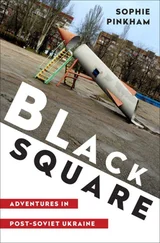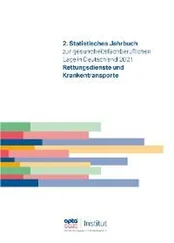She broke down the day of her departure. Cello took the children to their grandparents on Wannsee the night before. Dram informed the paid-off girl that the children would not be coming back that night, that it was best a parting scene not be imposed on them. He assured her that Cello was at that moment explaining to them that their au pair was going home because her own family missed her and that they should be happy for her.
Dram wasn’t there the morning she left. I’m the one who watched the tears erupt when she pulled her bags into the entrance hall. Her curling iron was in its box in a plastic bag. I made her sit down. I got her a tissue. She’d been a fool to agree not to tell the children anything until the last minute. I listened to her sob about how unfair it was to expect a young person not to have a social life; how unreasonable it was to keep the oldest out of school just to prevent him from saying goodbye to her; how unfair it was that their mother couldn’t see they’d become attached to her. She didn’t trust a reference from Cello not to be a stab in the back. I called her a taxi. I helped her take her bags downstairs. I hugged her. Humiliated, she was on her way back to her previous job in the gift-wrapping department at Marks and Spencer.
She told me to beware. She’d heard Cello and Dram having an intense discussion about me. Obviously she didn’t know what they said, because in her ten months in Berlin she’d learned not a word of German. But they’d repeated my name often, she said, and not in a nice way, she didn’t think.
* * *
N. I. Rosen-Montag had proposed the reclamation of an industrial wasteland on a bend in the River Spree, near the housing estates of the Hansa Quarter, as a focal point of the International Building Exhibition, or IBA, a series of meetings of architects, designers, and planners that was taking place in West Berlin over a period of years.
Much outrage followed the announcement that Rosen-Montag, a paper architect, had been given such pride of place, not to mention the huge commission, the chance finally to build. That was some time before I quit drinking and taking drugs. By the time I joined the project, hip Berlin columnists were gleefully relaying rumors that Rosen-Montag’s small-dwelling idea, his back-to-the-eighteenth-century-scale crusade, was seriously behind schedule and likely to be wildly over budget.
What made his peers quiver was the fact that he was a part of both the New Building and the Old Building sections of IBA, the sole architect to be so engaged. He could construct anew, fill in grassy gaps, and he could remake and revive old buildings, be an exponent of what the IBA director called “critical reconstruction.”
The Lessing Project, Lessingsdorf, was always going to have a hard time asserting itself against the modernist parks of the Hansa Quarter, overgrown strips between broad streets by railroad tracks. The Hansa Quarter was sacred ground for modernists. A postwar model city with contributions from many international architects, it had been the star attraction of an International Building Exhibition thirty years earlier. How dare Rosen-Montag insinuate himself into the landscape. On the map, Rosen-Montag’s sudden grid at a bend in the Spree looked like a Band-Aid on the raised knee of a napping Berlin.
Everything Rosen-Montag did woke up a front page in West Berlin. Perversely, he didn’t establish his workshop near the site between the river and the Hansa Quarter that he was being paid an incredible sum to reimagine. Instead, his headquarters sneaked into being south of the Tiergarten, behind the deserted, decaying embassies of the Axis powers in the old diplomatic quarter. His workshop consisted of an enclosed courtyard of white gravel on which sat six corrugated steel half cylinders arranged in an allée, vintage Nissen huts got for scandalous expense from Australia.
Rosen-Montag’s people translated without discussion the statement I prepared on the historic spirits that inhabit such structures and the benefit to arts groups the city-maintained space would provide after Rosen-Montag closed shop. Then, too, some French guy in the eighteenth century had proclaimed the hut as the foundation of all architecture. The generators behind the huts hummed in my ears when I lay down to sleep.
Rosen-Montag’s heavily locked-up site west of the Reichstag had been photographed from above and everything below the surface had been explored. Thousands of photographs, drawings, slides, blueprints, maps, and models were stored in their own hut back in the embassy quarter. Only two of the seven structures he was working on had been completed, a disused railroad garage and an old dairy. The city had had to buy them, at inflated prices, from the absentee owners because Rosen-Montag would start at no other point in his plans. He was still haggling with the authorities about the number of square meters of government-controlled property they were going to let him express himself on.
No matter what he was asked at the inaugural press conference that I had seen a film of, Rosen-Montag in reply praised the Berlin Senate for its vision. By the time he rose from behind the bank of hostile microphones it was as though he’d come to support the embattled Senate, the defenders of culture and historical truth, rather than the Senate having boldly hired him to do Cicero knew not what.
Rosen-Montag was so good-looking and charming he could get away with anything. He set great store by his having been born on the day of Germany’s unconditional surrender. It had been a bleak December day when he finally opened his workshop to journalists, but he stripped off his sweater and took questions in an overcrowded, steaming hut with his shirt unbuttoned to his belt. Aviator sunglasses crowned his head. His hair was all volume and he had a long stride and big feet. The women patrolling the huts knew where he was at all times, and no one was more alert to his movements than his wife.
She had been Rosen-Montag’s assistant on a project to reinvigorate a dangerous barrio in Rio, a project abandoned after a member of his staff was shot and killed. She’d become his project manager and his second wife and she kept a cold eye on the young women who followed him everywhere with clipboards and black binders thick with his drawings, musings, shopping lists. We wore discount versions of his elegant fitted clothes — black jeans, black T-shirts, black jackets, lustrous black leather overcoats — but we looked like a United Colors of Benetton clothing ad nonetheless, because Rosen-Montag liked to lace his German and French workforce with faces from around the globe — Japanese girls, Brazilian girls, an Egyptian girl, a guy from Bhutan, me.
Rosen-Montag had no interest in men; he was not even competitive with other men, though he loved to interrogate dead great ones, Schoenberg, Schinkel, Marx. He did the thinking and sketching; apprentices of different grades turned his drawings into specs and his diagrams into models, no women among the apprentices. He also did not hire women for the heavy jobs and his wife was careful not to either. But women ran his life, girls handpicked by his wife according to undisclosed criteria. He went everywhere with an entourage; white smoke wreathed the yellow bulbs in his hut as the slender women around him picked tobacco from their tongues and debated what appointments he could cancel in his impossible schedule.
The huts were meticulously clean. No roll of tracing paper was allowed to remain where it had fallen; every scrap of foam core had to be captured. But sometimes things smelled like a poker game because of the beers mixed with the smoke. I especially loved the stink of the apprentices and architecture students in black woolen sweaters that they hadn’t cleaned all winter. The two studio huts where blueprints dried and models were constructed smelled of boys’ armpits and ammonia. In the narrow canteen hut, any pasta sauce and even cigarettes were overpowered by the mustiness of old Europe, the Europe that Americans got on the plane home and complained about as not taking showers every day.
Читать дальше












